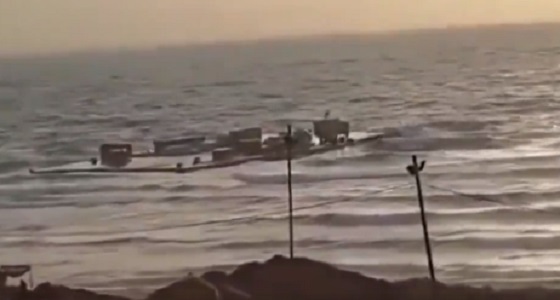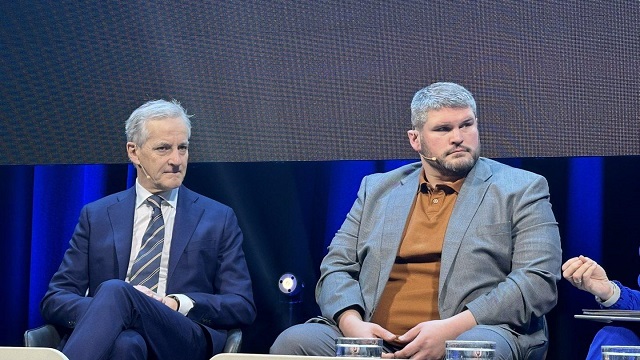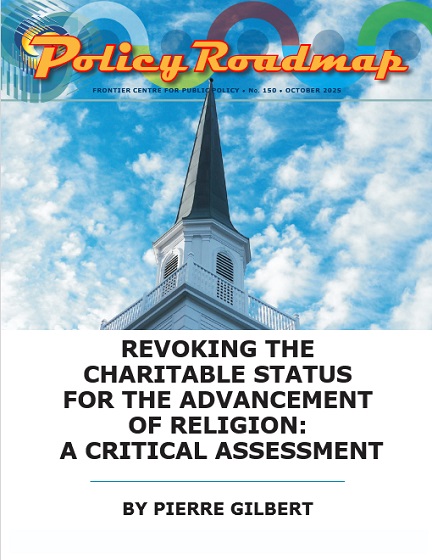International
‘Amateur Hour’: Biden Admin’s Floating Gaza Pier Problems Go From Bad To Worse

 From the Daily Caller News Foundation
From the Daily Caller News Foundation
By JAKE SMITH
New problems are mounting for the Biden administration’s $320 million floating Gaza aid pier which was already facing setbacks, despite becoming operational less than two weeks ago.
The U.S. military was forced to halt aid shipments to Gaza on Tuesday after the floating pier was damaged by bad weather over the weekend. The damage sustained from the bad weather is only the latest in a string of logistical and operational problems that have plagued the pier since it was constructed in mid May.
The JLOTS pier was a “horrible idea,” Michael DiMino, senior fellow at Defense Priorities and former CIA and defense official, told the Daily Caller News Foundation. “It’s a horrible idea due to the challenges that we just saw basically wreck the whole project.”
“It was never a sound plan to begin with… whether it’s accidents, or logistical hurdles, or risk to our troops and all these problems that have come to fruition. I don’t think that there should be any effort to try to continue this, or salvage it, or fix it,” DiMino said, pointing to safer, more effective methods of delivering aid to Gaza. “I think now is an opportunity to say this failed. Let’s wrap this up before we continue to tempt fate.”
Biden's floating pier in Gaza appears to be sinking pic.twitter.com/bN8WxSZLXh
— Daily Caller (@DailyCaller) May 28, 2024
Getting aid into Gaza via the JLOTS system requires several steps. Aid is first delivered by vessels to the floating pier off the shores of Gaza, where it is facilitated by U.S. officials. It is then picked up by loading vessels and transferred back to a separate causeway pier attached to the shores of Gaza, then trucked by various aid groups to warehouses for distribution.
Pentagon spokeswoman Sabrina Singh confirmed that U.S. aid deliveries had been halted after rough weather and choppy waters broke the causeway pier apart on Tuesday, rendering it useless for the time being. The pier will be removed from the coast of Gaza and towed northbound to Israel for repairs; it will take “at least over a week” to fix the pier before it can be re-anchored on the Gaza coastline, Singh told reporters.
“We had a perfect storm of high sea states… creating not an optimal environment to operate this JLOTS pier,” Singh said Tuesday, responding to a question as to whether the pier is too fragile to withstand tough conditions. “Hopefully weather conditions won’t hinder it anymore [once it is operational again].”
The pier can only be operated during favorable sea conditions, in a maximum of three-foot waves and wind speeds not higher than 15 miles per hour. Aside from the minimum week timeline, reconstruction efforts cannot take place if sea conditions are poor, possibly adding further delays
The incident comes just a day after a separate stint of bad weather unmoored four U.S. Army vessels supporting the JLOTS system and sent them floating away from the operational site off the coast of Gaza. Two vessels floated north and were beached in Ashdod, Israel, while the other two anchored on the Gaza coast near the causeway. One of the vessels has been recovered, and the other three will be recovered by Thursday, Singh told reporters during Tuesday’s press briefing.
A video from the incident appears to depict U.S. soldiers from one of the beached vessels in Gaza stranded on the shores of Gaza while awaiting rescue, despite the Biden administration’s promise that there would be no U.S. “boots on the ground” in the region during JLOTS operations.
“This is amateur hour. It’s unacceptable that there’s so little planning that appears to have gone into this, to the point where half a dozen U.S. troops are washed ashore in a war zone surrounded by Hamas,” DiMino told the DCNF.
That problem was proceeded by another incident last week in which three U.S. troops suffered injuries during JLOTS operations. While exact details haven’t been disclosed — other than that it was a non-combat incident — two of the troops suffered minor injuries and the third was critically injured and subsequently evacuated to an Israeli hospital for emergency care; he is still in critical condition, Singh said Tuesday.
Days after the JLOTS system was constructed, shipments that made it to the shores of Gaza via the causeway and floating pier were quickly stolen off of trucks by crowds of hungry civilians, creating security concerns among aid groups responsible for distribution. The United Nations and U.S. have discussed alternate routes for trucks to transfer aid to warehouses in lieu of the incident.
There are also security concerns for the U.S. troops supporting the JLOTS operations. Pentagon officials, including Department of Defense Secretary Lloyd Austin, have admitted there is a baseline risk that Hamas operatives on the ground in Gaza could stage an attack on the causeway or fire at troops offshore.
More broadly, only a fraction of the aid needed to address the humanitarian needs of the millions of Palestinians in Gaza can be delivered via the JLOTS system, even when fully operational. U.S. officials have said that roughly 90 trucks worth of aid will be delivered to Gaza via JLOTS in the interim, and eventually up to 150 trucks once the system is at full capacity.
But the UN previously told the DCNF in a statement that hundreds of trucks of aid are needed on a daily basis.
“That makes the pier a relative drop in the bucket at best — a waste of $320 million American taxpayer dollars and the futile deployment of 1,000 U.S. service personnel,” Shoshana Bryen, senior policy director at the Jewish Policy Center, previously told the DCNF.
It is far safer and more effective to deliver aid to the Palestinians through other methods, chiefly by truck convoys through border crossings in Egypt to the south and Israel to the west, of which there are several. The international community has expressed concern that Israel and Egypt are not allowing enough aid to enter through these crossings, though Israel counters that it is already going to great lengths to ensure delivery; Egypt refused to allow hundreds of trucks worth of aid to enter Gaza through the Rafah border crossing until recently.
Business
‘Taxation Without Representation’: Trump Admin Battles UN Over Global Carbon Tax


From the Daily Caller News Foundation
The Trump administration is fighting to block a global carbon tax that a United Nations (UN) agency is attempting to pass quietly this week.
The International Maritime Organization (IMO), a UN body based in London, is meeting this week to adopt a so-called “Net-Zero Framework,” which would levy significant penalties on carbon dioxide emissions from ships that exceed certain limits. The Trump administration argues the proposal could raise global shipping costs by as much as 10%, ultimately driving up prices for American consumers.
“President Trump has made it clear that the United States will not accept any international environmental agreement that unduly or unfairly burdens the United States or harms the interests of the American people,” Secretary of State Marco Rubio, Secretary of Energy Chris Wright and Secretary of Transportation Sean Duffy said in a joint statement Friday.
Dear Readers:
As a nonprofit, we are dependent on the generosity of our readers.
Please consider making a small donation of any amount here.
Thank you!
“The Administration unequivocally rejects this proposal before the IMO and will not tolerate any action that increases costs for our citizens, energy providers, shipping companies and their customers, or tourists,” the cabinet secretaries wrote.
This week, the UN is attempting to pass the first global carbon tax , which will increase energy, food, and fuel costs across the world. We will not allow the UN to tax American citizens and companies.
Under the leadership of @POTUS, the U.S. will be a hard NO. We call on…
— Secretary Marco Rubio (@SecRubio) October 15, 2025
The proposed tax is part of the IMO’s broader goal to bring global shipping to net-zero emissions “by or around” 2050. Qualifying ships that fall short of emissions targets would face taxes ranging from $100 to $380 per ton of CO2.
Notably, the tax would be paid directly by shipowners rather than governments.
The Net-Zero Framework could generate between $11 billion and $12 billion annually from 2028 through 2030, paid into a UN-controlled fund, according to University College London. Meanwhile, other estimates warn that if the global fleet misses the IMO’s targets by even 10%, the annual cost of emissions could climb to $20 to $30 billion by 2030 and potentially exceed $300 billion by 2035.
Some critics equated the proposal to “taxation without representation,” noting that an unelected committee would have the authority to set and potentially raise the tax.
The Trump administration is urging member states to reject the proposal and has threatened retaliatory measures against countries that support it. These include investigations into anti-competitive practices, visa restrictions for maritime crews, commercial and financial penalties, higher port fees for ships tied to those nations, and possible sanctions on officials promoting climate policies.
“The Trump administration is right to draw a hard line against the UN’s latest scheme to export its climate agenda through global taxes and trade barriers,” Jason Isaac, CEO of the American Energy Institute, told the Daily Caller News Foundation.
Isaac said the proposed carbon tax, along with other measures — including the EU’s Corporate Sustainability Reporting Directive, which requires companies to disclose environmental and social impacts — “represent an alarming attempt to impose costly, extraterritorial regulations on American businesses and consumers.”
“These measures threaten U.S. sovereignty, inflate energy and transport costs, and weaponize climate policy as a tool of economic coercion,” Isaac said. “The United States must not tolerate foreign governments using environmental pretexts to dictate how we trade, build, and move goods. President Trump’s firm stance puts American workers and energy security first, where they belong.”
Steve Milloy, senior fellow at the Energy & Environment Legal Institute, also commended the administration’s efforts to block the UN measure.
“Not only does [Trump] oppose the UN carbon tax, but he has instructed his administration to take action against nations that try to implement it against the U.S.,” Milloy told the DCNF. “I am simply in awe of his commitment to ending the international climate hoax, which has long been aimed at stealing from and otherwise crippling our country’s economy and national security.”
International
Hamas will disarm or die

President Trump warned Tuesday that Hamas will either follow through on its pledge to disarm under his 20-point Gaza peace plan or meet a violent end. “They’re going to disarm because they said they were going to disarm—and if they don’t, we will disarm them,” Trump told reporters while hosting Argentine President Javier Milei at the White House. “They know I’m not playing games.”
The president said Hamas had “misrepresented” how many bodies of deceased hostages it held after turning over just four on Monday. “If they don’t disarm, we will disarm them—and it’ll happen quickly and perhaps violently,” he said before a Cabinet Room luncheon. Trump explained that he had conveyed the warning to Hamas through emissaries, adding, “They told me, ‘Yes, sir, we’re going to disarm.’ They will disarm or we will disarm them. Got it?”
.@POTUS on Hamas: "They will disarm. And if they don't disarm, we will disarm them — and it'll happen quickly and, perhaps, violently, but they WILL disarm." pic.twitter.com/69wOMao2oX
— Rapid Response 47 (@RapidResponse47) October 14, 2025
Trump’s hard line came just hours after his return from Israel and Egypt, where he joined regional leaders to mark the cease-fire his administration brokered between Israel and Hamas following two years of war. The initial phase of the deal included Hamas releasing twenty Israeli hostages in exchange for hundreds of Palestinian prisoners and the first of three planned Israeli troop withdrawals. The agreement was hailed by world leaders gathered in Sharm el-Sheikh, though several provisions remain unsettled—among them, the timeline and enforcement of Hamas’ disarmament, the structure of a transitional Gaza government, and the makeup of an international peacekeeping force.
Despite the cease-fire, reports from Gaza Tuesday described Hamas militants using the lull to target rival militia leaders accused of collaborating with Israel, executing eight men by firing squad. Under Trump’s plan, the United States would chair a “Board of Peace” overseeing Gaza’s interim administration while transforming the territory into a special economic zone backed by Arab investment and large-scale reconstruction.
The president’s remarks underscored his readiness to enforce the deal militarily if necessary—a hallmark of Trump’s foreign policy. Having leveraged threats of force to secure earlier hostage releases, he made clear that Hamas’ disarmament is not a negotiable point but a precondition for lasting peace.
-

 Alberta2 days ago
Alberta2 days agoOil Sands are the Costco of world energy – dependable and you know exactly where to find it
-

 Energy2 days ago
Energy2 days agoIndigenous Communities Support Pipelines, Why No One Talks About That
-

 Business2 days ago
Business2 days agoFinance Committee Recommendation To Revoke Charitable Status For Religion Short Sighted And Destructive
-

 Alberta1 day ago
Alberta1 day agoThe Technical Pitfalls and Political Perils of “Decarbonized” Oil
-

 International2 days ago
International2 days agoNumber of young people identifying as ‘transgender’ declines sharply: report
-

 National14 hours ago
National14 hours agoDemocracy Watch Renews Push for Independent Prosecutor in SNC-Lavalin Case
-

 Health2 days ago
Health2 days agoColorado gave over 500 people assisted suicide drugs solely for eating disorders in 2024
-

 Censorship Industrial Complex1 day ago
Censorship Industrial Complex1 day agoCanada’s privacy commissioner says he was not consulted on bill to ban dissidents from internet





